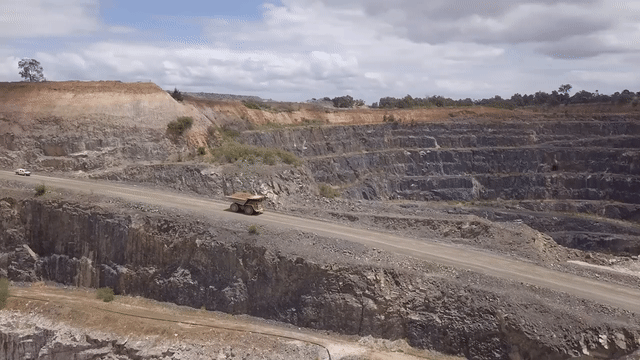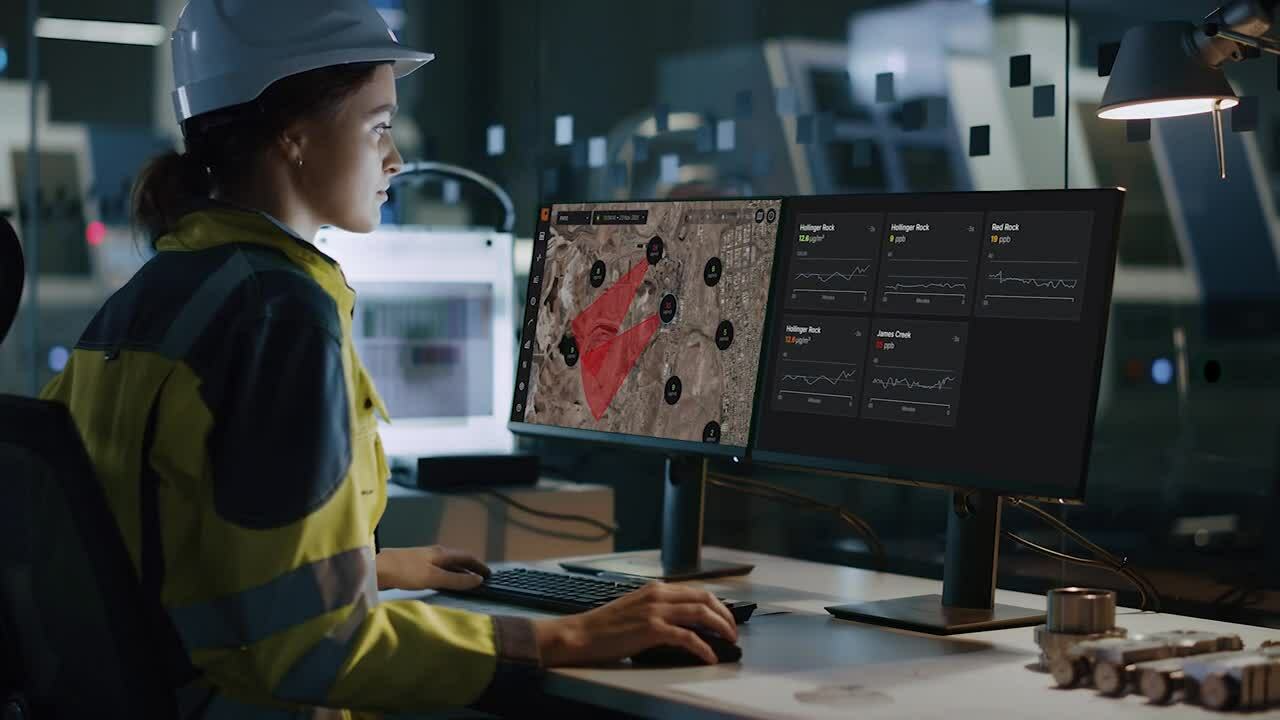How does Environmental Data Monitoring help Dust Control?
Comprehensive data monitoring for dust control involves continuously collecting, analysing, and interpreting data on dust levels. This helps mine operators understand dust dynamics and implement control measures. Mining data monitoring systems collect air quality data, particle size distribution, and weather conditions like wind speed and direction, which affect dust dispersion. Advanced sensors, software, and drones are key components of modern systems, enabling real-time data collection and processing for actionable dust control insights.
The Crucial Need for Effective Dust Control in Mining Operations
Dust control in mining is a critical issue that requires substantial attention due to the health, environmental, and operational challenges it poses. The mining industry, often characterized by intensive and large-scale extraction processes, inherently generates significant amounts of dust that can adversely affect worker health and the surrounding environment. Addressing this issue effectively necessitates the implementation of comprehensive data monitoring systems that provide real-time insights into dust levels, enabling proactive and informed decision-making.
Key Components of an Effective Dust Monitoring System
High-quality dust sensors are essential for effective data monitoring in mining. They must be robust, accurate, and capable of harsh conditions. Advanced software is necessary for data processing, visualization, trend analysis, and predictive modeling. Real-time data enables immediate management, while automated reports ensure compliance and streamline communication with regulators. Integrating these systems seamlessly into existing operations enhances efficiency without disrupting workflows.
Benefits of Comprehensive Data Monitoring
Improved Worker Health and Safety - By continuously monitoring dust levels, mining companies can implement timely interventions to reduce exposure, thereby protecting worker health and enhancing overall safety.
Enhanced Environmental Protection - Data monitoring aids in identifying and mitigating environmental impacts, ensuring that dust emissions remain within acceptable limits and reducing the likelihood of environmental degradation.
Better Regulatory Compliance - Real-time data allows mining operations to demonstrate compliance with regulatory standards, avoiding potential fines and enhancing their reputation within the industry.
Operational Efficiencies and Cost Savings - Comprehensive data monitoring can lead to more efficient resource utilization and process optimization, resulting in significant cost savings. For instance, targeted dust suppression efforts based on real-time data can minimize the usage of water and chemicals.
The Challenges of Dust Control in Mining
Mining operations, including drilling, blasting, and material handling, significantly contribute to dust generation. The types of dust, such as silica or coal dust, vary depending on the materials mined but all pose serious health risks to workers and local communities. Prolonged exposure can lead to respiratory diseases like silicosis and pneumoconiosis, affecting worker health and productivity. Environmental impacts include air and water pollution, harming local ecosystems and reducing biodiversity. Mining operations must meet strict regulatory standards to control dust emissions. However, compliance is complex due to variable on-site conditions and the need for precise, real-time data.
Future Trends in Data Monitoring for Dust Control
Integration of AI and Machine Learning for Predictive Monitoring
Artificial Intelligence (AI) and machine learning algorithms can predict potential dust issues before they occur, allowing for preemptive measures to be taken. Systems like Omnis by Envirosuite exemplify how predictive monitoring can revolutionize dust control in mining.
Advances in Sensor Technology and Data Analytics
Ongoing advancements in sensor technology and data analytics will continue to enhance the accuracy and functionality of data monitoring systems, providing more detailed and actionable insights.
The Role of IoT and Smart Mining Solutions
The Internet of Things (IoT) and smart mining solutions bring enhanced connectivity and interoperability. These technologies enable a more holistic approach to dust control, where all data fragments from the mining site are pulled together into one integrated system.

Omnis by Envirosuite revolutionizes real-time dust control with advanced monitoring and smart alerts. Its powerful features provide instant data insights and timely notifications, enhancing decision-making and operational efficiency. By harnessing cutting-edge technology, Omnis ensures continuous environmental monitoring, allowing proactive measures before issues arise. This not only supports regulatory compliance but also fosters a safer, more productive work environment.

Discover Omnis for Dust Control in Mining Activities. Book a Demo Today.
Omnis is designed to pull together various data fragments, including air quality data, weather conditions, and operational data, into a single platform. This centralized system enables more effective monitoring and management of dust control efforts, driving better results.

Omnis empowers mines to visualise multiple parameters across their sites in real-time to identify non-compliance events in advance, enabling operators to adjust operations accordingly and identify efficiency gains.
Regulatory authorities are imposing tighter restrictions on operators to monitor their water usage and maintain the quality of any water being discharged from the site. Omnis supports operators with intelligent, real-time insights for water management and enables them to supply accurate data to stakeholders for transparency. It also provides operators with real-time insights to understand if their mine is compliant with noise regulations and what may be causing non-compliance across their operation.
Take your mining operations to the next step and book a demo with us today!
